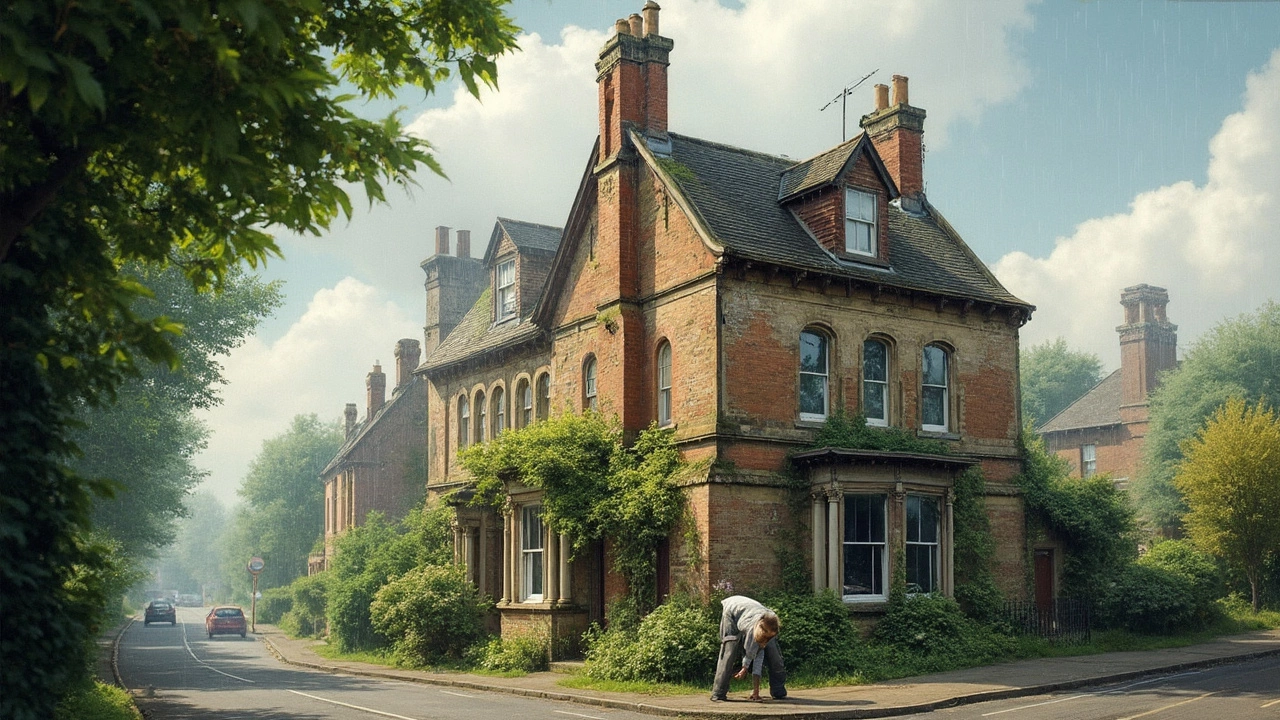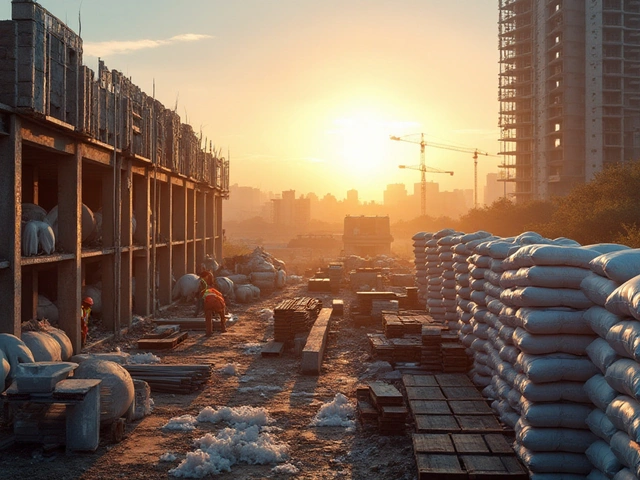So, you’re living in or thinking of buying an older home. Maybe it’s got that vintage charm, creaky floors, or if you're lucky, a gorgeous wraparound porch. It's no secret that older homes come with their share of quirks. Among those quirks, one of the potentially serious issues is foundation problems. You might be wondering just how common foundation problems are in these beloved old structures. Well, let's get to it.
First off, the age of a house definitely plays a role in the types of foundation issues it might face. Over time, natural settling occurs; but older homes can also suffer from poor construction practices back in the day. Imagine getting a loan for a house only to find out that the foundation is already leaning towards a disaster. Bummer, right?
Also, let’s not forget nature's role. Older houses often come with older trees with thirsty roots, which can mess with the soil around the foundation. And if changing weather patterns are in play, that may affect the soil moisture levels, pumping the brakes on the stability of your sweet abode. Soggy soil or drought-like conditions? Both can wreak havoc.
- Common Causes of Foundation Issues
- Signs Your Home Might Be in Trouble
- When and How to Call the Experts
- Preventive Measures and DIY Tips
Common Causes of Foundation Issues
Let’s talk about what’s messing with your home foundation. Knowing these common causes can be a lifesaver, or at least a wallet saver. So why do these issues pop up in older homes?
One big reason is the type of soil under your house. Yep, soil does a lot more than just sit there. Some soils expand and contract with the weather. It's like they're living their own dramatic life, and your foundation is caught right in the middle.
Another factor is plumbing leaks. Those sneaky water pipes hidden in walls and under floors can leak over time. Leaky pipes mean water, and water means trouble. It can soften the soil around the foundation, causing shifts and cracks.
Let's not forget about tree roots. You know those beautiful trees out front? Their roots can stretch out and mess with your home's foundation. As they grow, they can even break through, causing major headaches.
Then there's the matter of poor drainage. Older construction often means outdated drainage systems. If water can’t flow away from the house properly, it gathers around the foundation. Thanks to gravity, water, even in small amounts, can start causing foundational shifts over time.
Construction practices back in the day can also be a culprit. Standards evolve, but some older homes were built without the knowledge we have now. This means the original build might not handle the test of time and weather like modern builds do.
Finally, natural disasters like earthquakes or floods, though less common daily worries, can also hit older homes harder. They weren’t always built to withstand such events as well as new construction is today.
With all these factors, you can see why keeping an eye on your foundation is crucial. Noticing these issues early can save a lot of money and stress down the line.
Signs Your Home Might Be in Trouble
Spotting foundation problems early can save you a ton of stress and money down the road. So, how do you know if your older home is dealing with foundation issues?
Start by keeping an eye on any cracks in the walls. Not every crack is a sign of the Big Bad Wolf, but horizontal or stair-step cracks, especially those wider than a quarter of an inch, might signal something more pressing.
Doors and windows are another telltale. If you've noticed they're becoming tough to open or close, or maybe they’re sticking more than usual, your house might be talking to you about foundation troubles.
Have you ever sat in your living room and noticed it feels a bit like the Leaning Tower of Pisa? Sloping or uneven floors can mean your foundation isn’t holding its own. It's almost like your house's way of waving a red flag.
- Cracks in walls, especially horizontal or stair-step ones
- Doors and windows that stick or don't latch properly
- Sloping floors that feel like they're going downhill
Also, look out for water pooling around the exterior of your home. It might be causing soil to shift more than a country line dancer on Friday night. This water can lead to soil expansion or contraction, messing with your foundation’s stability.
And lastly, listen for creaking sounds. While an older home will have its share of creaks, sudden increases in noise might mean your home is having a bit of a rough time dealing with foundation shifts.
If any of these red flags sound familiar, it might be time to raise your own flag and call in a professional for a closer look. After all, nobody wants to come home to a bigger problem than they left in the morning.

When and How to Call the Experts
So you've noticed some unsettling signs around your home: doors not shutting right, cracks crawling up your walls, or maybe the floors seem to be leaning a bit. It's tempting to brush it off and hope for the best, but these might be warning signs of foundation problems. Knowing when and how to reach out to the pros can save you a whole lot of hassle—and money—in the long run.
First up, don't ignore the obvious signs. If you see big cracks in the walls or foundation, or if your windows just don't sit right in their frames, it's time to hit the panic button. But seriously, these are signals that you should not handle alone. Structural issues need expert insight.
So, when should you call in the cavalry? Here are a few scenarios:
- Major cracks larger than a quarter-inch wide appear in your foundation or walls.
- Doors and windows are constantly sticking or have become misaligned.
- Water pooling around your foundation or your basement stays damp.
- Uneven or sloping floors have become more than just a minor annoyance.
Now, how about the 'how'? Start by gathering your notes. Have a list of what you've noticed, and maybe even a few photos. This will help the expert get a clearer picture from the get-go. It's like giving them a head start.
Finding the right professional is crucial. Look for a licensed contractor who specializes in foundation repair. It's not like asking a general handyman to come over—this job needs an experienced touch. Take a peek at reviews, and ask for references if needed.
Don’t be shy about asking your potential expert some key questions, like the expected timeline and cost, or what kind of techniques they use. Being informed empowers you to make the right decisions. After all, this is about ensuring your house stands strong for many more years.
Preventive Measures and DIY Tips
When it comes to keeping your older home's foundation in good shape, a bit of diligence goes a long way. Even if your old house hasn’t shown any signs of foundation issues yet, a little prevention can save a ton of headaches (and cash) later on.
Start by minding the gutters and downspouts. Make sure they’re channeling water at least 5 feet away from the foundation. Water pooling around the base can spell trouble over time.
- Keep the Soil Moist: In dry spells, water the soil around your home. Consistent moisture levels help prevent the soil from shrinking and pulling away from the foundation.
- Watch the Big Trees: Those lovely old trees could have root systems reaching toward your foundation for a drink. Consider root barriers as a solution if necessary.
- Check for Cracks: Regularly inspect the foundation for hairline cracks. If you spot any, mark them to monitor growth and seal them to prevent water intrusion.
- Maintain Consistent Indoor Climate: Big temperature changes inside your home cause expansion and contraction of materials, which can affect the foundation. Keeping a steady climate helps reduce stress on building materials.
Thinking of taking on some DIY? Here are some steps and tools to get started:
- Seal Minor Cracks: For hairline cracks, use a concrete patching compound or an epoxy sealer. First, clean out the crack, apply the sealer, and smooth it out with a putty knife.
- Check for Slope: One DIY tip for drainage is ensuring the ground around your house slopes away (ideally at a 5% slope, that’s about 6 inches for the first 10 feet) to direct water away from the foundation.
- Fix Minor Drainage Issues: Use basic skills to install a French drain or adjust gutter systems to drive water away. It's not too tricky and often solved with a simple DIY guide.
If DIY tips feel a little out of your comfort zone, it’s always wise to consult a professional sooner rather than later. Ensuring your home foundation issues are addressed promptly means fewer surprises down the line.





